
This week was time to get better acquainted with the Spanish Persimon® , the star of Valencia, this particular variety with the trademark is spelt with a single ‘m’, to distinguish it from other persimmons, which grows in the Ribera del Xúquer Valley near the beautiful city of Valencia in Spain.
Valencia is the third-largest city in Spain after Madrid and Barcelona. This delicious fruit brings me good memories, evoking the taste of my childhood in Brazil.
Persimon® is the only persimmon that’s certified, and with Protected Denomination of Origin (P.D.O.) status. The unique spelling and trademark is used to identify the Rojo Brillante variety of persimmon grown in the Ribera del Xúquer region and characterised for its firm flesh and astringency. The locals call this fruit kaki. It has a sweet, delicate flavour and is available for a short period in the UK; from mid-October until January. Available at Morrisons, Tesco, CoOp, Asda, Sainsbury’s and Costco UK.

A visit to Anecoop

While in Valencia, we visited Anecoop, the Spanish citrus fruit, vegetable, salad and wine cooperative. Their aim is to expand their product range, reach new markets and improve their bargaining power with large-scale distributors.
The cooperative is formed by 70 members, cooperatives and companies. Their goals are:
‘1) To ensure optimum profitability, social and sustainable development, and the maximum harmony and integration of its farmers and members.
2) To encourage the personal and professional development of its employees.
3) To establish business relations with its customers for the mutual benefit of all concerned.
4) To cater for the needs of end consumers and provide them with healthy products.’
Persimmons are the fastest growing crops in Spain in recent years. The Anecoop Persimon Group, one of the divisions of the Anecoop, is dedicated to single-product marketing and made up of 27 cooperatives. Its quest is to standardise technical, quality and marketing standards for kakis (Persimon®) from the Ribera del Xúquer, in the province of Valencia.
A wander around the Spanish Persimon® orchards
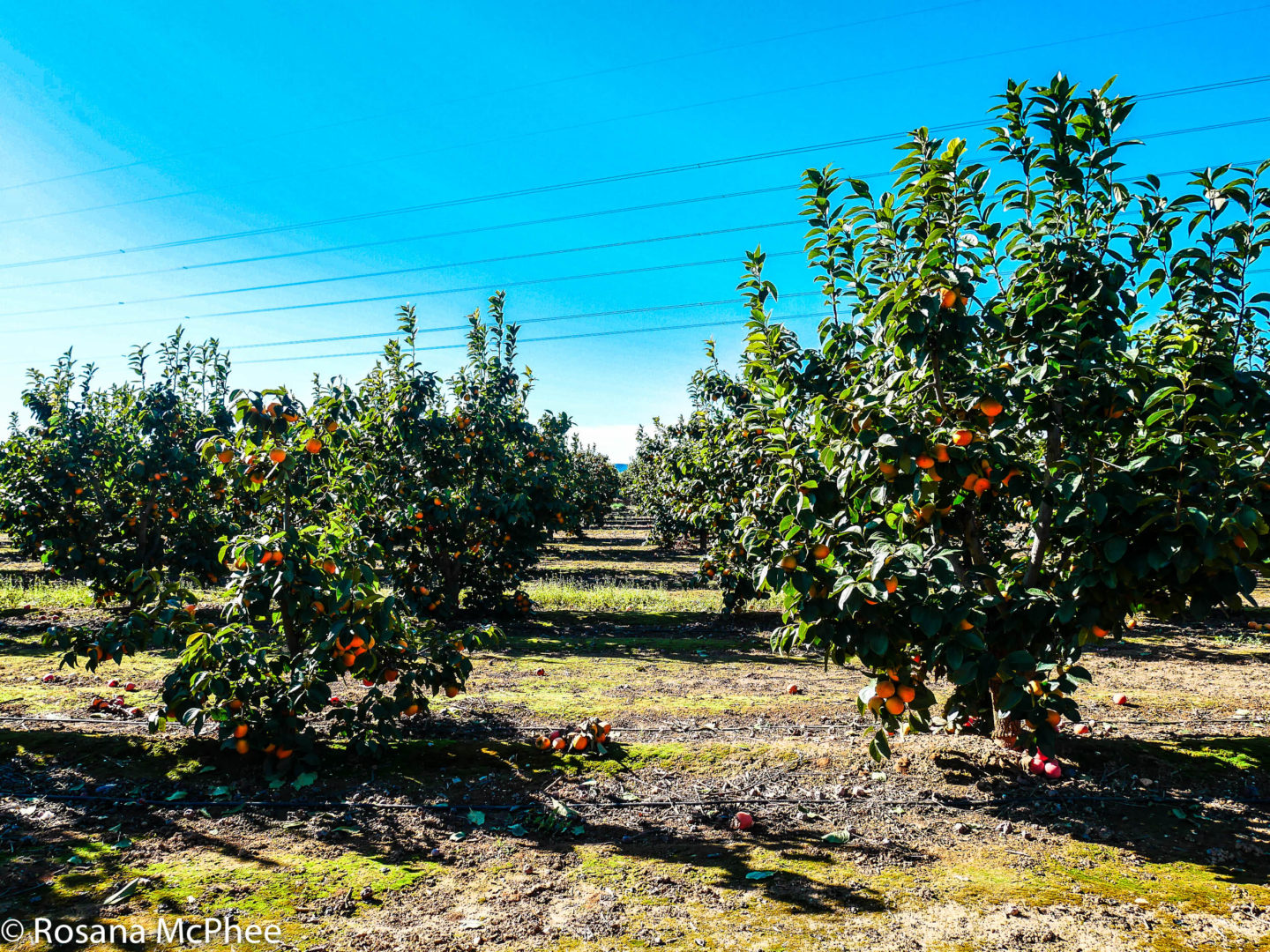
The orchards are usually small and spread all over the vale. The Spanish Persimon® is the Rojo Brillante variety, which has a longer body and is slightly pointy on the base compared with other persimmons.
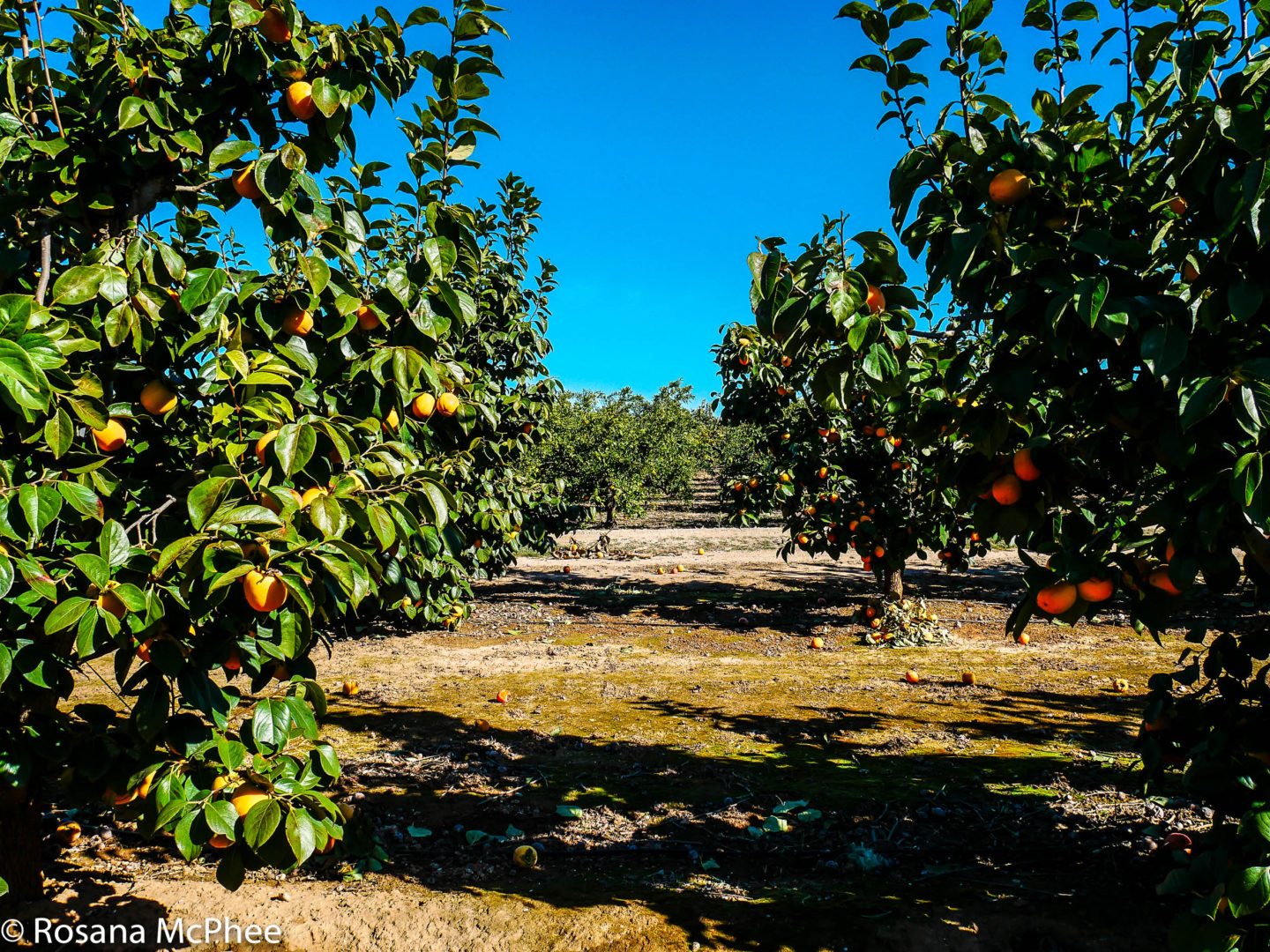
To thrive, persimmons need to be placed in a sunny spot with fertile soil that drains well.
At this particular orchard, the Mediterranean flies are controlled with natural traps, some plots are organic (bio) other are not. At the packhouse, the fruits are washed with just water.

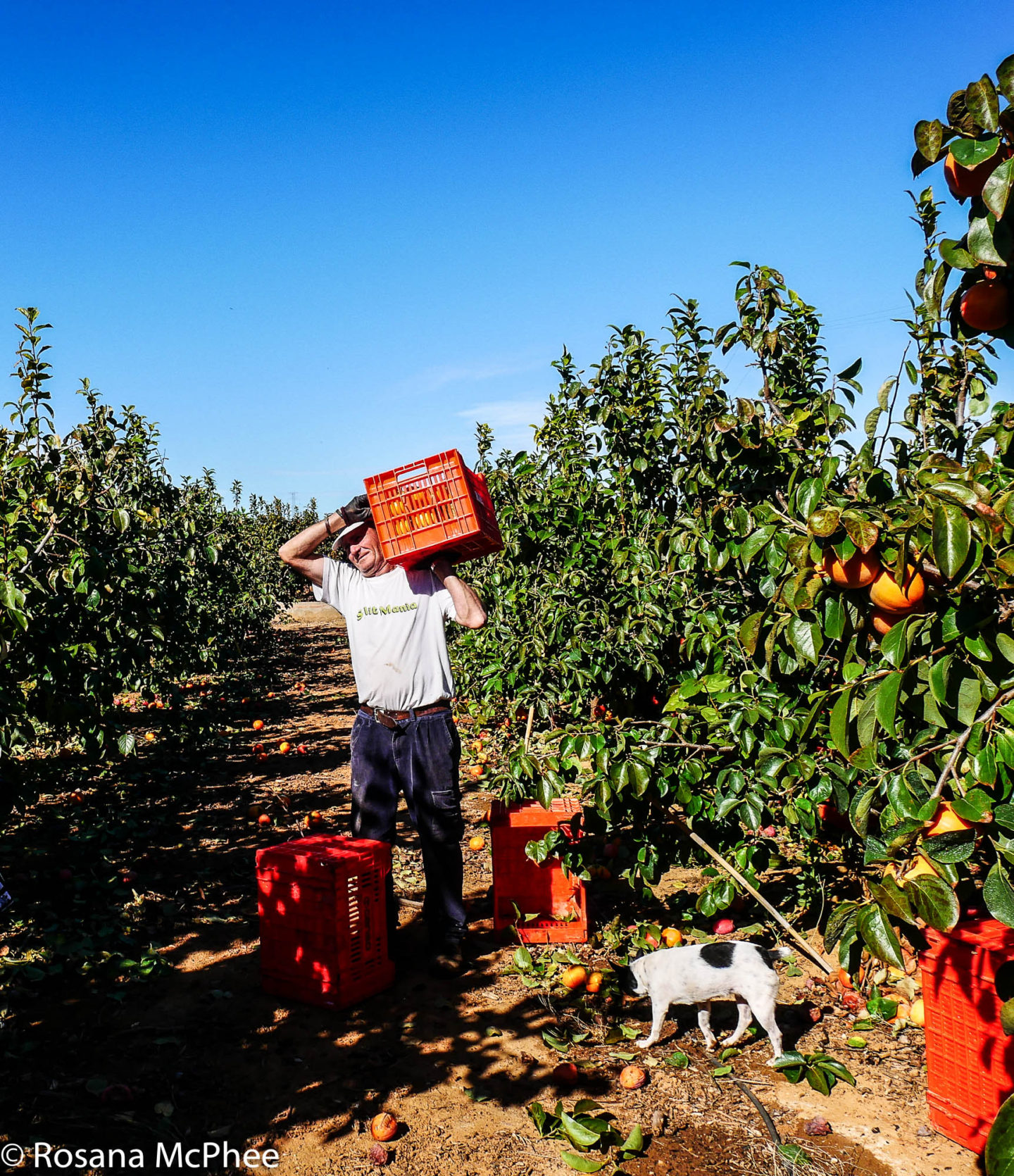
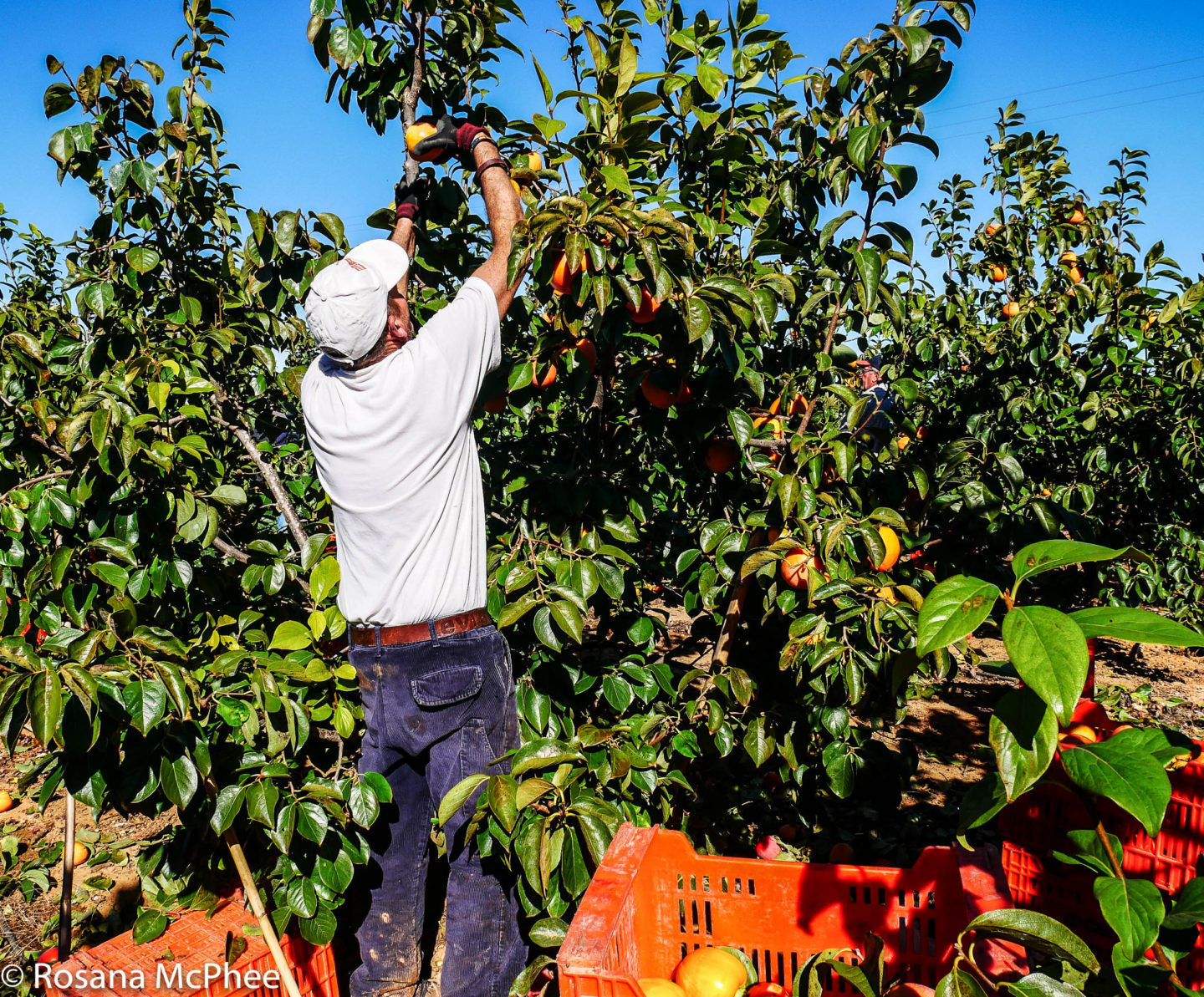

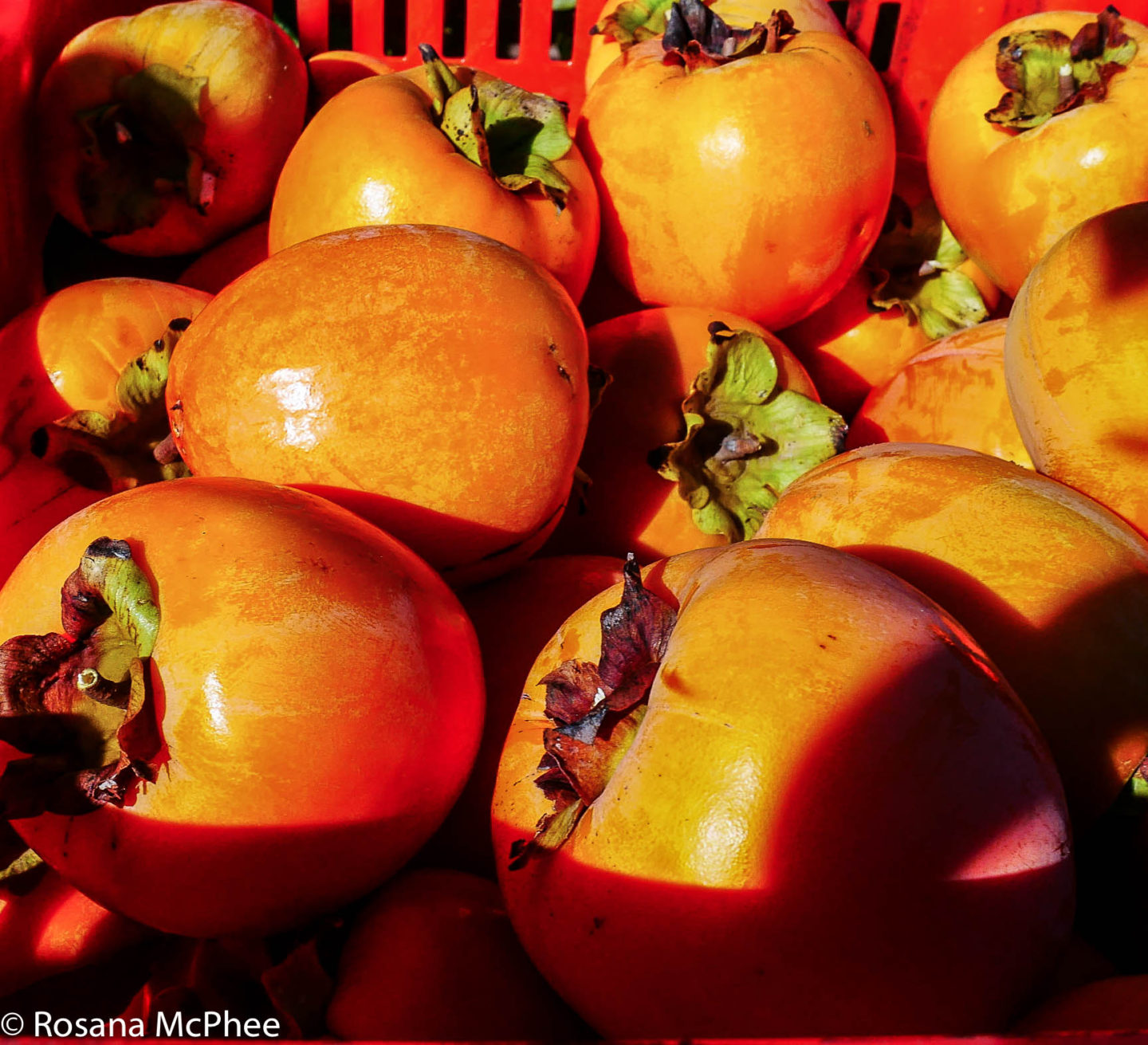
The Spanish Persimon® Packhouse
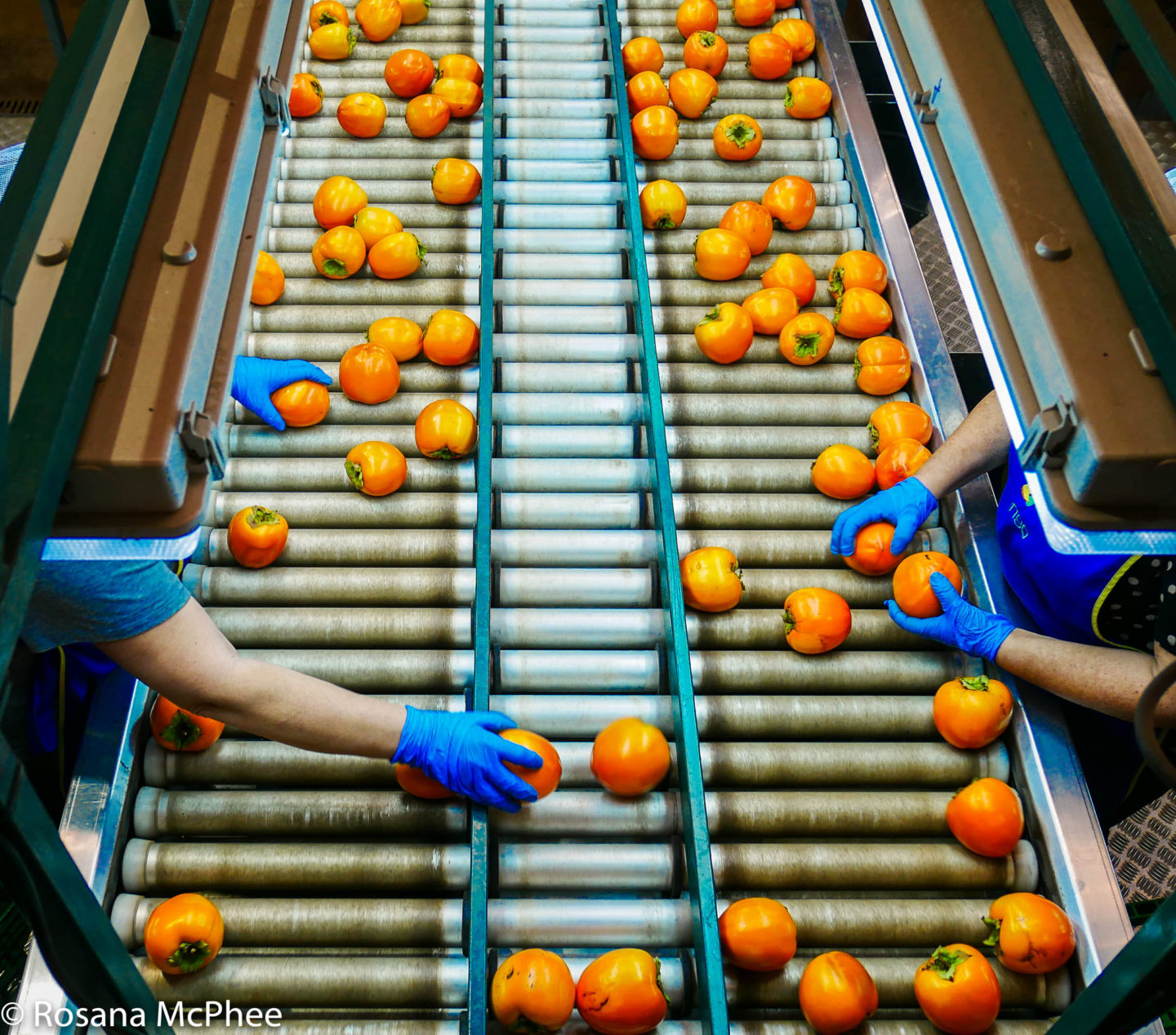

Once harvested, the Persimons®are taken to the packhouse. They are then kept in a vacuum room for a minimum of 18 hours to have the astringency taken out to make them edible, after that they are selected by size and colour and separated by hand into three sections: first class, second class and the ‘non-commercial ones’.
The first- and second class Persimons® are washed and packed separately, ready to be sold to their respective markets. The non-commercial ones are cleaned and sent to make jam, compost, animal feed, and other uses. Nothing is wasted.
The shelf life of Spanish Persimons® is about two to three weeks.
Spanish Persimon® flavour profile
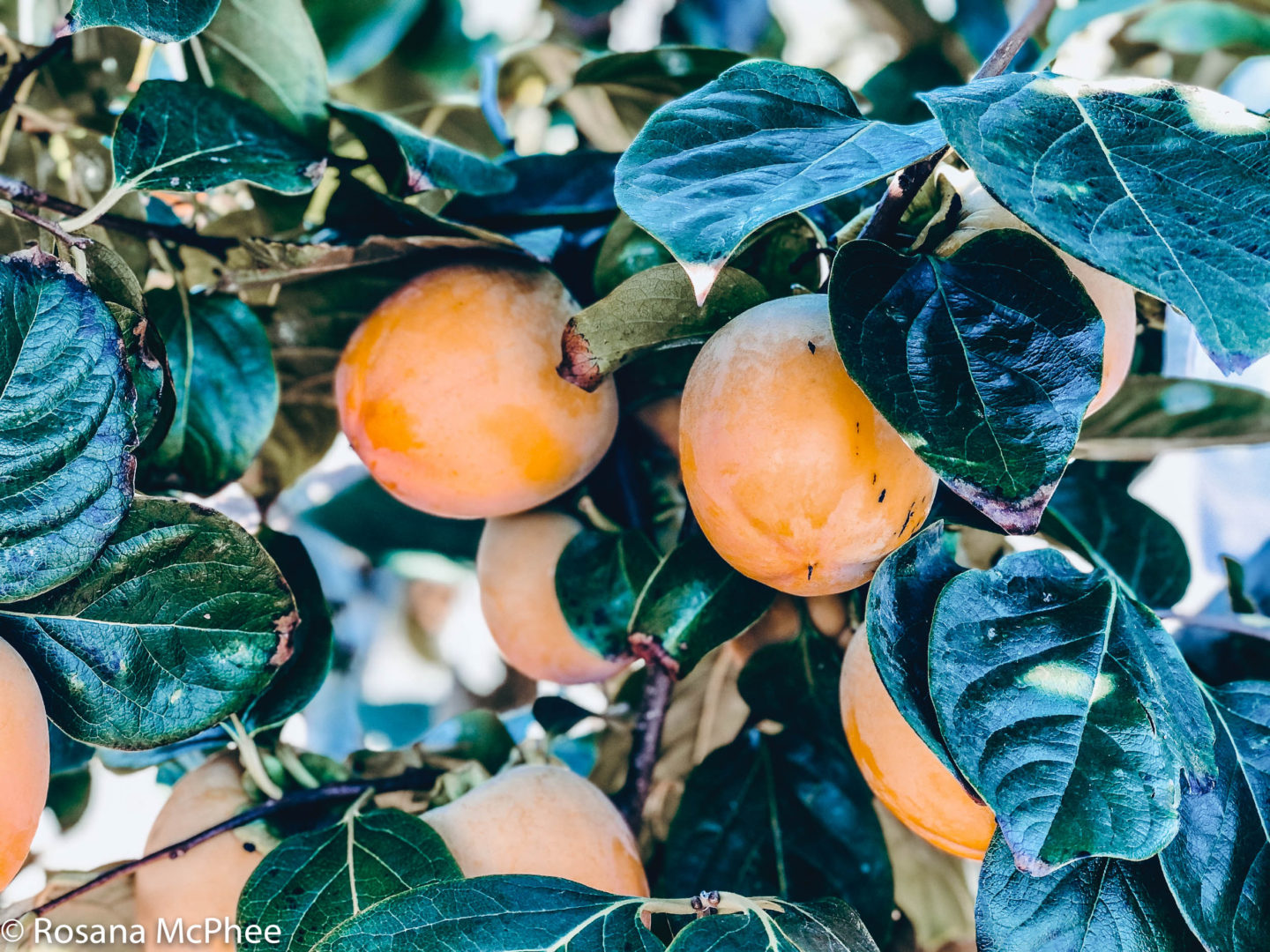
The skin of a Spanish Persimon® is slightly thicker than apple skin when ripe. It has a rich sweetness and a strong flavour, like a cantaloupe melon, or some also liken it to a mango. It’s similar to a peach, but somehow the taste is denser and lingers longer.
In contrast, an overripe persimmon is as mushy as a roasted eggplant (aubergine). A perfectly ripe persimmon is still somewhat crisp but has that blush of ripeness and is just beginning to soften. It will quickly melt in your mouth.
These fruits are a good source of vitamins A and C, as well as potassium, and are high in antioxidants. Furthermore, Spanish Persimon® have also been associated with helping to lower cholesterol, by reducing the risk of clogging in the arteries.
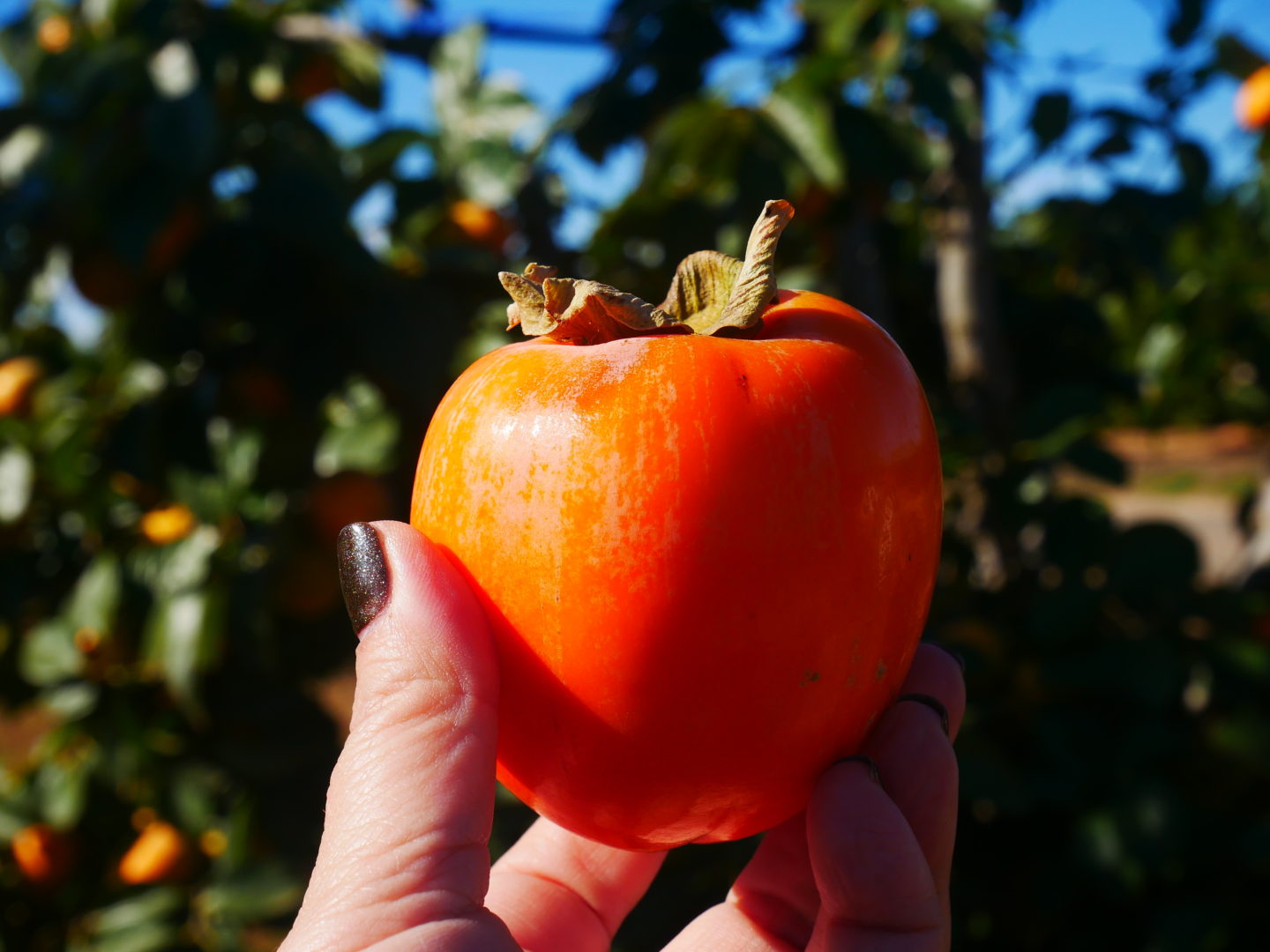
Slicing and eating persimmon is one way to enjoy this succulent and versatile fruit. As a result, you can also use them fresh in salads, in smoothies, to make ice creams, desserts and more.
A few years ago, I posted a few recipes using persimmon; you can read all about it: Persimmon stories. Here is a quick and tasty recipe using Spanish Persimon® in a winter salad:
Spanish Persimon® winter salad recipe

Serves 4 – 6
Ingredients
60ml extra virgin olive oil, 3 tbsp
1 tablespoon lemon juice
1/4 teaspoon fine sea salt
1 teaspoon of parsley, finely chopped
150g cream cheese
50g of finely grated cured hard cheese
2x figs, quartered
50g pea shoots, cleaned and dried
150g thin sliced ham, cut into strips lengthwise and rolled
50g cured hard cheese, shaved
4 persimmons, finely sliced
4 radishes, finely sliced
1 small fennel bulb, finely sliced
100g caramelised walnut halves
55g of sugar
1 tablespoon of unsalted butter
Salt & pepper to taste
Method
1)prepare the walnuts: in a non-stick skillet over medium heat, add the walnuts, granulated sugar and butter, cook for 5 minutes, frequently stirring so your mixture doesn’t burn and is evenly coated – especially towards the end. Pour the nuts over baking parchment to cool – reserve
2)In a medium bowl, whisk the lemon juice, olive oil, salt and pepper thoroughly. Set aside
3)In another small bowl, mix the parsley, cream cheese and grated cured hard cheese. Add salt and pepper to taste
4)In each serving plate, place the persimmons in circles. Add the radishes, figs, pea shoots and fennel dress the salad with some of the olive oil mix.

5) Place hard cured cheese shavings and the caramelised walnuts and a spoon of cream cheese mix to each plate. Drizzle with the rest of the olive oil dressing. Serve immediately
See more behind the scenes @Rosana_McPhee
PIN FOR LATER

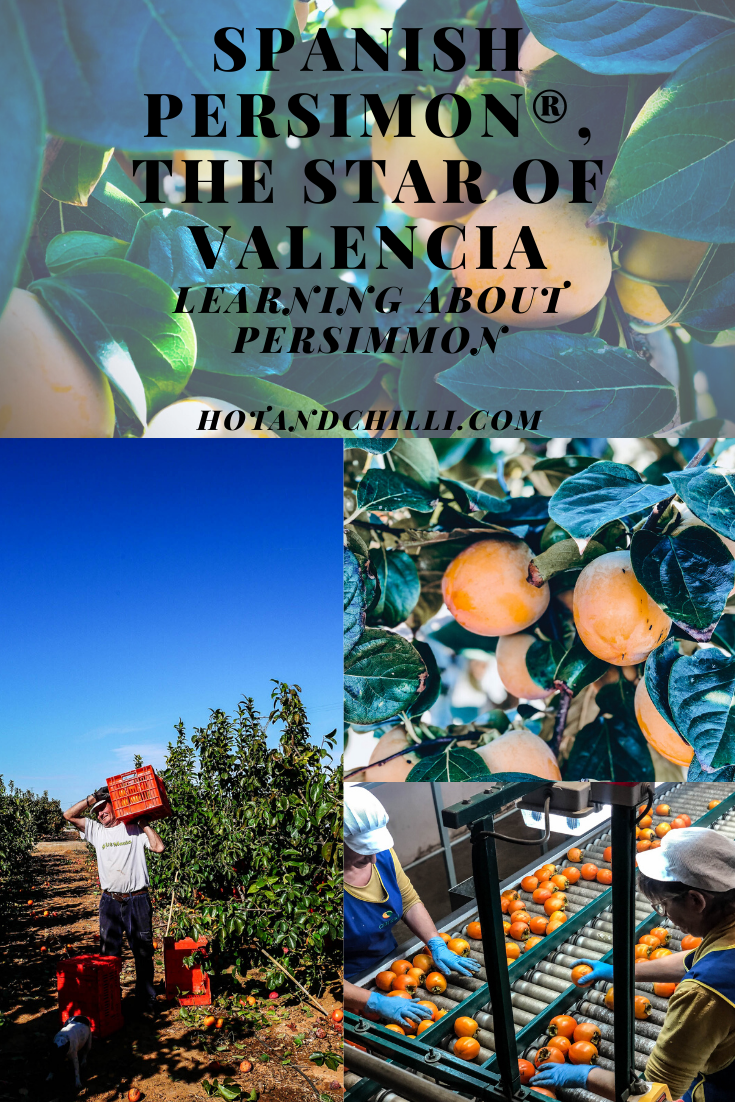
Disclosure: I was on a press trip as a guest of Spanish Persimon®. Everything you are reading here are my words, my opinions and, unless otherwise stated, my pictures.

Love the look of the recipe and the background to persimmon or should I say persimon.
Author
Thanks It’s very tasty and easy to put together. Persimmon is the fruit, Persimon the brand! LOL